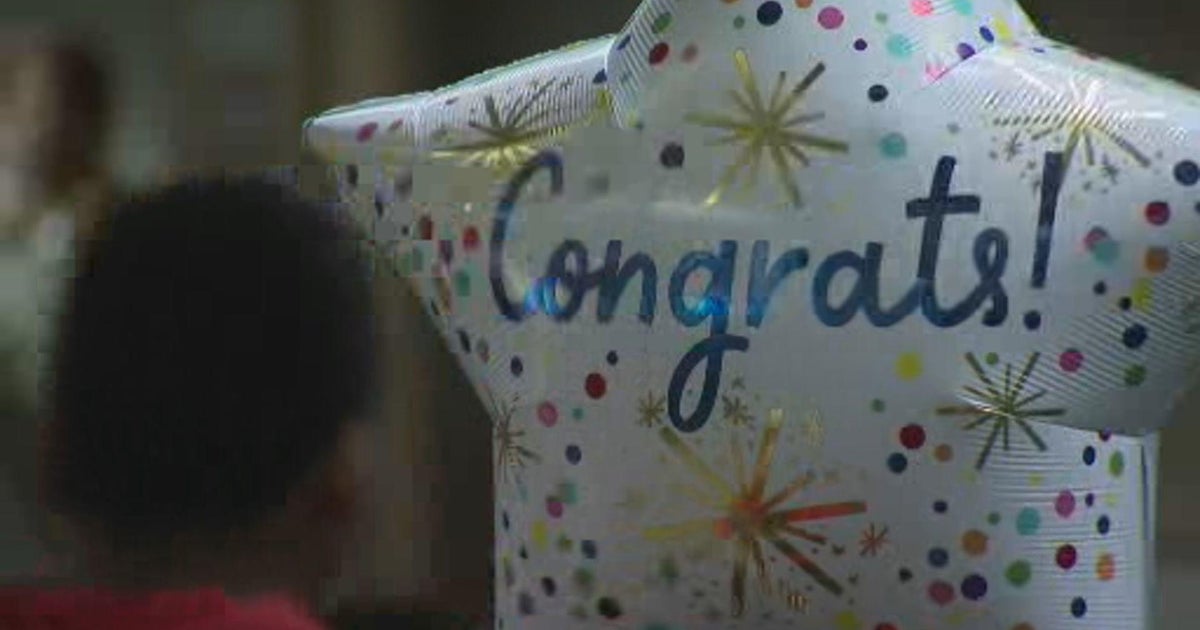More Anti-Panhandling Meters Are On The Way
MIAMI (CBS4)- Miami-Dade's Homeless Trust, behind schedule on a plan to install 1,000 meters where people can donate to the homeless as part of an anti-panhandling campaign, is counting on a recent vote by Miami commissioners to give the project a boost.
Two years ago county commissioners gave their okay to move forward with a plan to install meters on county-run properties near where panhandlers spend time. But unanticipated problems like flawed meter designs and property rights have stalled the program to the extent that only 70 meters have been put up, according to CBS4 news partner The Miami Herald.
"I'm an impatient guy, as you probably know," said the trust's executive director, Ron Book. "It took a long time to get the city ordinance out, and I needed it for rights-of-way in the city itself."
Book and others hope the Miami ordinance passed unanimously earlier this month will lead to the installation of meters at panhandling hotspots in the downtown area, where panhandlers still aren't shy about asking for money, even though it's technically illegal.
Still, Book says the campaign has been successful, but, "there's a long way to go. We haven't broken the cycle yet."
The Homeless Trust has collected about $12,000 in pure meter donations since the first meter was erected about seven months ago, and another $43,000 from private citizens or businesses paying $1,000 a pop to sponsor a machine. The shiny new machines cost about $500 a piece and are individually painted by artist Romero Britto. Though some of the meters are at sites like Government Center and Metromover stops, the machines, which look like parking meters, have also been placed on private property at Bayside Marketplace and in a parking lot next to Joe's Stone Crab on Miami Beach.
It's taken more time than expected just to make the machines. Many of them had to be redone because the painted wrap that was to go around the meters didn't fit properly. And one of the two "super meters" – six-foot-tall yellow triangular structures with plastic windows and a slot above each — was broken into at Bayside, the money inside stolen. Book said most of the money taken in has been spent on new machines and 40 more have been paid for and are in production.
A Miami-Dade County Commission vote in 2009 allocated $118,000 for a public awareness campaign and paved the way for the Homeless Trust to oversee the installation of the machines. But without permission from the city of Miami, the trust was unable to set up at many popular panhandling sites.
Right now the machines are tough to find by people who don't use mass transit or work at Government Center. A recent visit to Government Center found the super meter on the ground floor of County Hall, far from the trains. It was filled mostly with coins and dollar bills.
The difficulties in reducing panhandling have bedeviled other cities that are trying the meters.
Cleveland began an anti-panhandling campaign two years ago by erecting placards near hotspots that told the public to "please" stop donating to the poor. Not only was it viewed as offensive, but the campaign's kickoff, run by a downtown development authority, didn't sit well with the Northeast Ohio Coalition for the Homeless, which pushed for the removal of the signs.
Cleveland then erected friendlier signs and meters where the public was urged to donate money instead of subsidizing panhandlers. After six months, the city had collected a couple of hundred dollars, enough to pay for some gas for a circulator bus used to transport the homeless to the doctor and other appointments. Donations haven't gone up much, and panhandling continues.
Brian Davis, executive director of Northeast Ohio's Coalition for the Homeless, said Cleveland's meters "haven't raised a whole bunch of money." He said the city-installed meters in high traffic places as an alternative to donating to panhandlers.
Other cities like Baltimore, Denver, San Francisco and Montreal have been more successful, collecting at some points close to $10,000 a year.
Miami uses a hybrid of the other systems, having local artists paint the machines and collecting money from private donors who want to "adopt" a meter.
Questions still persist as the new meters begin making their way around the city: Though the homeless population in Miami is believed to have dropped to about 800, no one has a concrete figure on how many people panhandle.
Also, though the Homeless Trust is in charge of the program, even Book admits not all panhandlers are homeless, and not all homeless are panhandlers. Still, he says people should not be "enabling'' panhandlers by giving them money.
"The homeless appreciate what we're doing – because panhandlers give them a bad name," he said.
And some people will forever be more comfortable giving a buck or two to the guy they see standing on the street corner each day as they drive to work than to some semi-autonomous government entity.
Miami Commissioner Francis Suarez is one of them. He says he usually hands out about $1 a day, and intends to do so to panhandlers in the Flagami district he represents.
"For me,'' he said, "it's like a personal religious experience."
(©2011 CBS Local Media, a division of CBS Radio Inc. All rights reserved. This material may not be published, broadcast, rewritten, or redistributed. CBS4 news partner The Miami Herald contributed material for this report)



